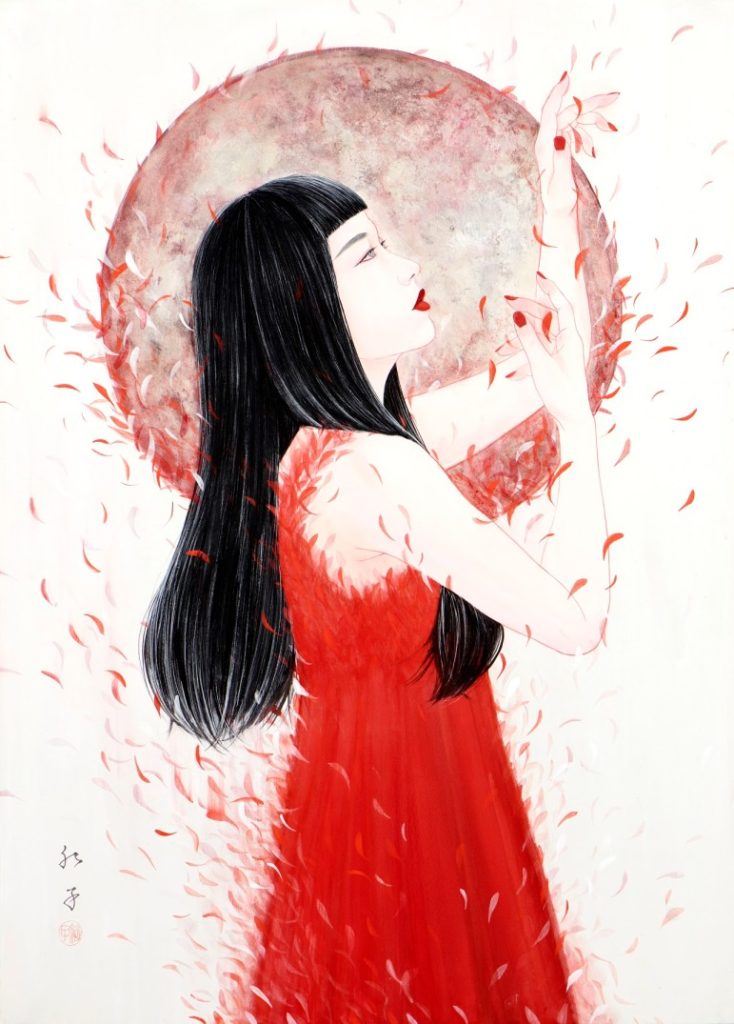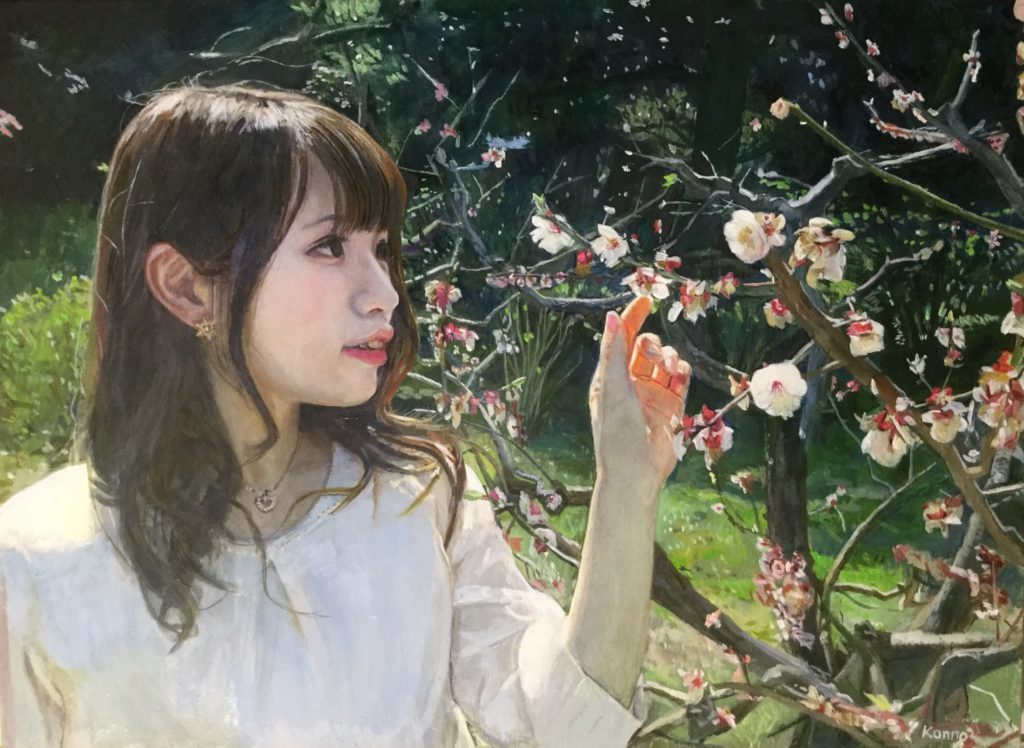A bijinga is a painting that depicts a beautiful woman's appearance and gestures, or a painting that deals with the beauty of women. The term "bijinga" is a term that originated in Japan, and the style of this work symbolizes the beauty of Japanese women.
 By Hishikawa Shigenobu, Looking Back at a Beautiful Woman, Color on silk,
By Hishikawa Shigenobu, Looking Back at a Beautiful Woman, Color on silk,
63.0 x 31.
2cm, 17th century (
Lent by Tokyo National
Museum ) The history of bijinga, which began with the ukiyo-e artist Hishikawa Shigenobu, was handed down to Takehisa Yumeji, Uemura Shoen, and others after the end of the Edo period. The popularity of bijinga reached its peak around 1916, even though it was criticized intensively by critics for originating from ukiyo-e, which was considered low-class art for the common people.
Although it does not have the momentum of the time when it swept the world, it is still a major genre of Japanese painting and is probably a strong part of Japanese culture.
However, there is something old-fashioned about the sound of beauty painting, which has become part of traditional culture.
Akihiro Mitsumoto
Akihiro Mitsumoto is one of them.
Although he uses oil and platinum leaf as mediums instead of the mineral pigments used in Japanese painting, the appearance of the women depicted in his paintings is that of a bijinga.
 The creation of margins ... You and Linglong,
The creation of margins ... You and Linglong,
116.7 x 58.3 cm Mitsumoto says, "I want to express not only the person but also the space in which the person exists by making the most of margins.
The background is also worthy of attention. The tiles on which the woman sits directly and the concrete walls give a glimpse of her background as an architect.
 You and the Rose and the Creation of
You and the Rose and the Creation of
Margins112 x 162 cm Click here to see the works
Beniko Choji / Beniko Choji
As the gender of the artist changes, the perspective on female beauty also changes dramatically. Encountering Beniko Choji's work brings up such thoughts.
In her works, she depicts a single, expressionless woman. The reason why she limits the colors of the woman, her clothes, and a few other motifs is to create a space for the viewer's emotions and to encourage contemplation. Without a background, the beauty that naturally draws the viewer's gaze has elements of the "decadent beauty" seen in beauty paintings since the end of the Edo period.
 Something to Hold Up,
Something to Hold Up,
91 x 65.2 cm The use of red and black, which are often used to depict sex and violence, and the depiction of women with poisonous makeup and attire make this work seem tense at first glance. However, if you take the time to look at the expressions of the women in the paintings, you will feel a very gentle temperature coming from the paintings, and you will be aware that the tension is slowly relaxing. Every time you look at a painting of a beautiful woman, her expression changes, and you will never get tired of seeing her paintings, which shake the viewer's heart.
 Secret story.
Secret story.
39 x 28 cm Click here for an introduction to her works
Masahiko Konno
The artists I have introduced so far have a traditional style based on the context of the past. However, there are also artists who inject the essence of modernity into the "beauty of Japanese women" that beauty paintings possess. Among them is Masahiko Konno, whose work evokes an extremely modern sensibility.
 Plum blossoms (baika),
Plum blossoms (baika),
33.3 x 45.5 cm In the Edo period (1603-1868), beauty paintings did not focus on the resemblance to the model, but rather on which ukiyo-e artist's "style" the beauty was represented. Later, as the times progressed, the pursuit of reality was pursued and the female figure gradually became more realistic.
 Ki-chi,
Ki-chi,
45.5 x 33.3 cm Imano further updates the stylized beauty paintings and paints them as if they were photos uploaded to a social networking site. I wonder if this is the result of a modern take on the beauty of Japanese women, or if it is just a coincidence. Regardless, the fresh women depicted by Konno are "alive.
Click here for an introduction to his works.
As evidenced by the popularity of Ikenaga Yasuakira, there are certainly signs of a revival of bijinga. It is a good idea to think about this as you gaze at the beauties standing on the screen, wondering who will be the artist who will weave the history of bijinga in the future.